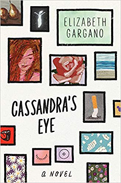
 |
This sensitively written debut novel narrates the complicated, intertwined stories of several Portland, Maine, residents, all of them connected to the art gallery collective, Cassandra’s Eye. Set in 1969, the novel is told through the viewpoint of Shanti, a young woman on the cusp of adulthood who is trying to find herself amid competing expectations placed on her. Her parents, feckless artistic types who operate Cassandra’s Eye, expect her to follow their lead into bohemian life, but not before she is done acting in loco parentis to her younger siblings. By contrast, her no-nonsense Aunt Rose encourages her to pursue a career in nursing. She explores young love with an aspiring artist and then falls into another affair with a married man. Her coming-of-age encompasses sexual awakening, drug experimentation, and rebellion—small steps and large leaps onto her own path.
Especially as a first novel, this book contains much to praise. It evokes the cultural milieu of the 60s with poetic specificity. Several party scenes, in particular, ring true to the time, and an LSD trip Shanti takes with her boyfriend is described beautifully: “Shooting stars showered my shoulders, green and golden . . . Honey dripped over me. I was all gold.” Such vivid and colorful imagery is a real strength of the novel’s prose throughout. The secondary characters are well delineated, and they form an intricate web of desire, expectation, deception, and resentment that surrounds Shanti and complicates her coming-of-age. Her stolid and stodgy Aunt Rose, in particular, comes to life—her conventional appearance and attitudes contrasting with Shanti’s parents and illustrating the cultural clashes of the time. Not just Shanti but all the characters struggle to find their way, showing that coming-of-age is not just a singular event, but a messy, ongoing journey of becoming.